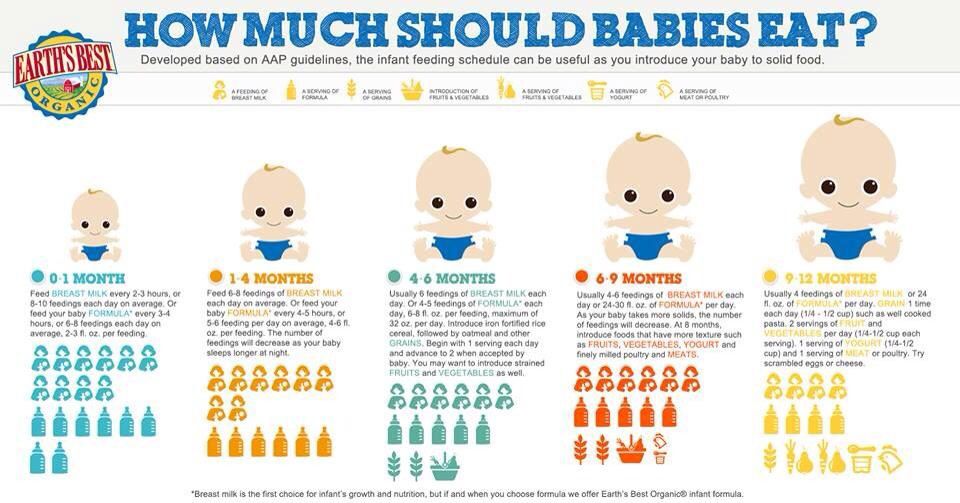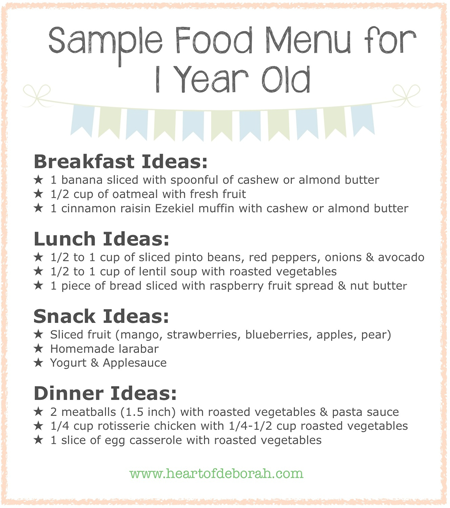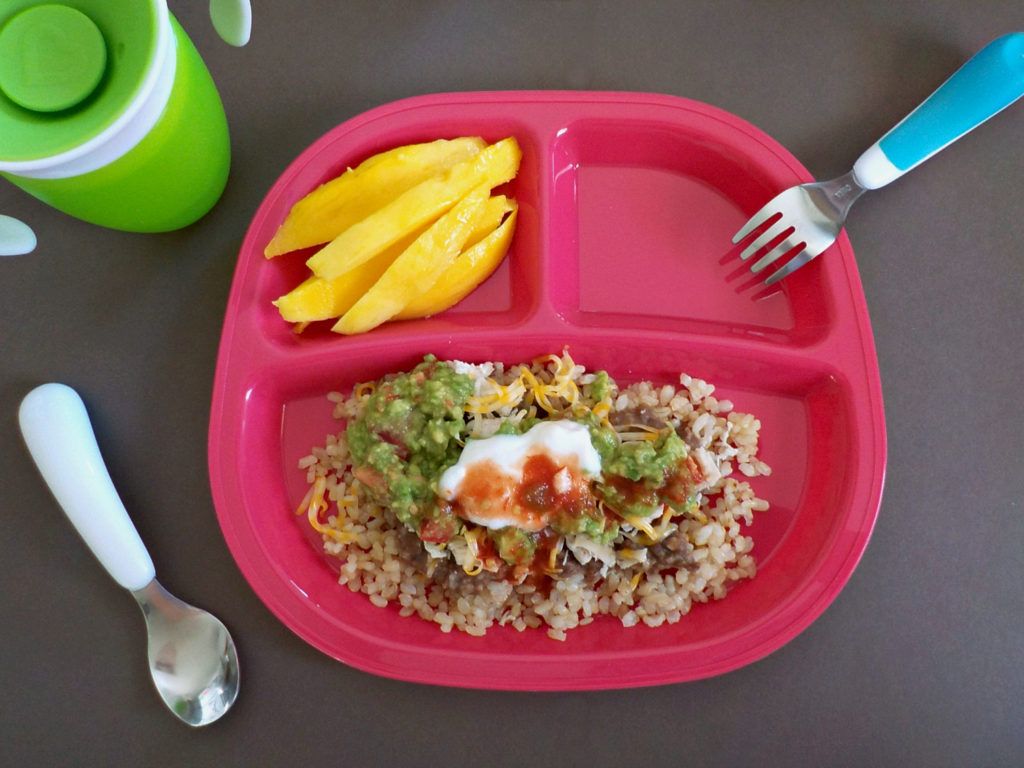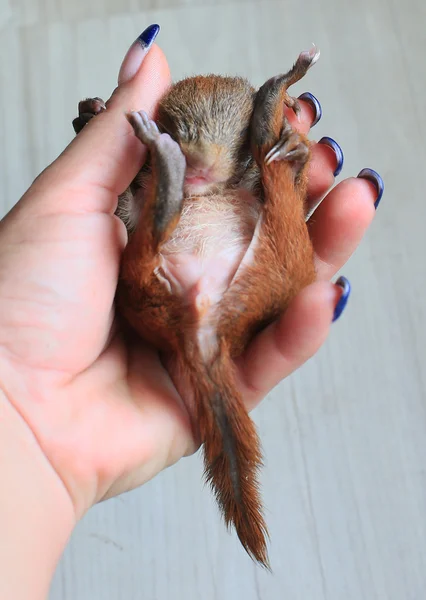Milk feeding bottle for baby
Bottle-feeding babies: giving the bottle
About bottle-feeding
If your baby can’t always feed directly from your breast, you might choose to bottle-feed with expressed breastmilk. Or you might need to feed your baby infant formula, which is the only safe alternative to breastmilk.
Before you bottle-feed your baby, it’s important to know how to clean and sterilise bottle-feeding equipment, as well as how to prepare, store and warm bottles of formula. This will help to keep your baby safe from infection and make sure baby is getting the right nutrition.
Getting the right flow when bottle-feeding
To test the flow of the formula or breastmilk, hold the bottle upside down when it’s filled with liquid at room temperature. The liquid should drip steadily from the teat but not pour out.
If you have to shake the bottle vigorously to see the drip, the flow is too slow. Your baby might go to sleep before drinking what they need.
When you feed your baby, you might see a little leakage at the corners of your baby’s mouth. This doesn’t mean the flow is too fast. It’s nothing to worry about. It will stop as your baby gets older.
If you have trouble finding a teat with a flow to suit your baby, try a faster teat rather than a slower one. You might need to try a few different teats before you find one that suits.
Giving baby the bottle
Make yourself comfortable and cuddle your baby close to you, holding baby gently but firmly. It’s better for your baby to be on a slight incline so any air bubbles rise to the top, making burping easier.
Put the teat against your baby’s lips. Your baby will open their mouth and start to suck. Keep the neck of the bottle at an angle so it’s filled with formula or breastmilk.
When your baby stops sucking strongly or when about half of the formula or breastmilk has gone, gently remove the bottle and see whether baby wants to burp. Once you’ve tried burping your baby, you can offer the bottle again.
Paced bottle-feeding
Babies who are normally breastfed might find it hard to pace themselves when bottle-feeding, particularly if they’re premature.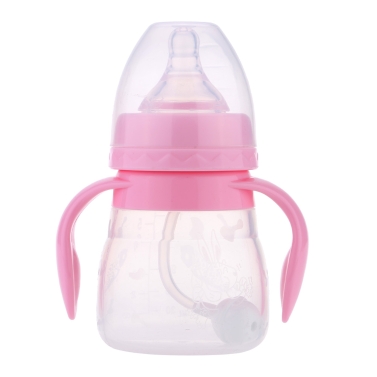 This is because they’re used to controlling the flow of breastmilk. Sometimes these babies can drink too much too quickly.
This is because they’re used to controlling the flow of breastmilk. Sometimes these babies can drink too much too quickly.
Paced feeding can sometimes help. This involves holding your baby in an upright position and letting them rest every few minutes. If you’re interested in paced bottle-feeding, it’s best to get help from your child and family health nurse or a lactation consultant.
Holding, cuddling and talking to your baby during feeding will help baby develop and grow. It’s also a great opportunity to bond with your baby.
When baby doesn’t finish the bottle or goes to sleep while feeding
Don’t worry if your baby doesn’t finish the bottle. Babies are very good at judging how much they need, so you can let your baby decide when they’ve had enough formula or breastmilk.
If your baby goes to sleep during a feed, put baby over your shoulder, rub their back, and stroke their head, legs and tummy. This can help your baby to wake up. A nappy change is a good way to wake up your baby if that doesn’t work.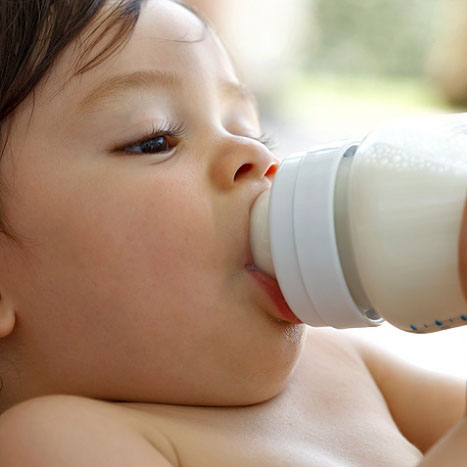
Wait until your baby is properly awake before offering the rest of the formula or breastmilk.
If there’s any formula or breastmilk left in the bottle, throw it away after one hour. When your baby drinks from a bottle of formula or breastmilk, bacteria from their mouth get into the milk. The bacteria can grow and make your baby sick if you give your the baby the half-finished bottle later.
When baby refuses the bottle
Babies sometimes refuse a bottle altogether. Here are things to try if this happens:
- Try a new feeding position or change the feeding environment. For example, move around while you’re feeding, find a quieter place to feed, or play some relaxing background music.
- Try again later when your baby is more settled. For example, give your baby a bath and then try again.
- Ask your partner or another family member to give your baby the bottle.
- Try using a different teat. If the flow of formula or breastmilk is too slow, it might frustrate your baby.

- Let your baby open their mouth for the bottle when they’re ready, rather than putting the teat into their mouth.
- Offer the formula or breastmilk from a small cup or spoon. To do this, sit your baby up and offer them small sips.
If your baby is regularly refusing the bottle, you could try adjusting your routine.
If you think your baby is refusing the bottle because they’re unwell, treat your baby’s symptoms or take your baby to see your GP.
How much do bottle-feeding babies drink?
Newborn babies commonly have 6-8 feeds every 24 hours, but there’s no set amount of food or number of feeds your baby should have. Different babies drink different amounts of formula or breastmilk. Some might have feeds close together and others further apart. And it can change from day to day.
Just feed your baby whenever they’re hungry. You’ll see baby cues that say ‘I’m hungry’ – for example, your baby will make sucking noises or start turning towards the breast or bottle.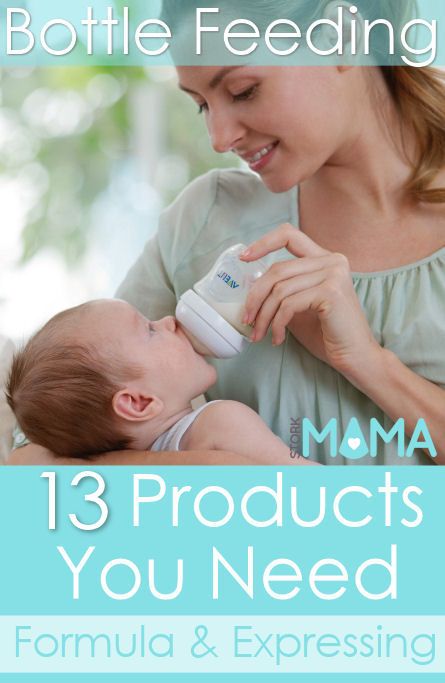 If your baby stops sucking or turns their head away from the bottle, you’ll know they’ve had enough.
If your baby stops sucking or turns their head away from the bottle, you’ll know they’ve had enough.
As your baby eats more and more solid food, the total amount of breastmilk or formula they take in a day will decrease. The amount of breastmilk or formula will also decrease as your baby starts to drink from a cup instead of a bottle.
Some babies never drink the ‘recommended amount’ for their age and size, and others need more. Plenty of wet nappies, consistent healthy weight gains, and a thriving, active baby mean all is well. If you’re concerned about how much breastmilk or formula your baby is taking, talk to your child and family health nurse or GP.
Bottle-feeding in bed: issues and risks
Sleep associations
If your baby gets used to falling asleep with a bottle in bed, they might depend on it to get to sleep. This can make it more difficult for your child to fall asleep or settle for sleep independently.
Bottle-feeding in bed also has several risks for your baby.
Choking
Babies who fall asleep while bottle-feeding can draw liquid into their lungs. They might then choke on it or inhale it.
Tooth decay
Babies have less saliva in their mouths to protect their teeth during sleep. If your baby falls asleep with a bottle, the lactose in the milk can build up on your baby’s teeth, putting your baby at risk of tooth decay.
Ear infections
If your baby drinks while lying flat, milk can flow into the ear cavity, which can cause ear infections.
It’s best to put your baby to bed without a bottle or to take the bottle away after your baby has finished feeding.
Using a feeding cup
When your baby is around 6 months old, you can help your baby start leaning to drink from a cup. It’s best to stop using bottles by the time your baby is 12 months old.
You should continue to thoroughly wash and sterilise feeding cups containing infant formula or breastmilk until your baby is 12 months old.
10 Best Bottles for Breastfed Babies (2022 Reviews)
I planned to breastfeed my baby exclusively for the first year, just as my doctor and lactation consultant suggested I should. But I’d heard nightmarish tales of babies refusing to breastfeed after trying bottles, and I was worried because I definitely didn’t want my baby to stop nursing entirely.
“Nipple confusion” sounded funny to me at first until I considered how bad it would be if it happened to me and my little one. When she started feeding erratically after I introduced her first bottle, I wondered if I had ruined a good thing. Now I know that I should have paid a little more attention to that bottle I’d given her!
What are the best bottles for breastfed babies? Is there anything you can use to stop that breast/bottle confusion from developing? Let’s find out.
Our Top Picks
We love honesty! Mom Loves Best earns a commission through the following hand-picked links at no extra cost to you.
Image
Model
Product Comparison Table
Features
Best for Travel
Comotomo 8 Ounce
- Withstand heating and squeezing
- Great for vacations
- Close to breastfeeding experience
Check Price
Best Budget Pick
NUK Simply Natural
- Inexpensive option
- Built-in anti-colic system
- Features multiple nipple holes
Check Price
Most Innovative Bottle
Nanobebe Breastmilk
- Milk cools and warms faster
- Helps with reflux and colic
- Chunky, tactile shape
Check Price
Best Plastic Bottles
Mimijumi Get Going
- Realistic nipple look & feel
- Easy to assemble and clean
- Helps fight colic
Check Price
Best for Colic & Gas
Munchkin Latch
- Affordable set
- Anti-colic valve
- Once won American Baby’s award
Check Price
Best Glass Bottles
Philips Avent Natural
- Easy to clean or fill
- Compatible with any Avent nipple
- Anti-colic features
Check Price
Short Nipple Choice
Lansinoh Momma NaturalWave
- Great choice for picky babies
- Natural feeling nipple
- Collapse-resistant nipple
Check Price
Helps for Natural Latch
Tommee Tippee Closer to Nature
- Realistic nipple
- Great for babies that refused bottle
- High quality and non-toxic materials
Check Price
A Breeze To Clean Up
Playtex Nurser
- Ensure extra hygiene
- Generous flow
- Easy to assemble
Check Price
Table of Contents
- Our Top Picks
- The Best Bottles for Breastfed Babies of 2022
- What Your Breastfed Baby Wants in a Bottle
- What Mom Wants in a Bottle
- Tips for Buying Bottles
- When Do I Introduce Bottles to my Breastfed Baby?
- Tips for Bottle-feeding a Breastfed Baby
- What is Paced Feeding and How Can it Help?
The Best Bottles for Breastfed Babies of 2022
These are the top bottles for breastfed babies:
1.
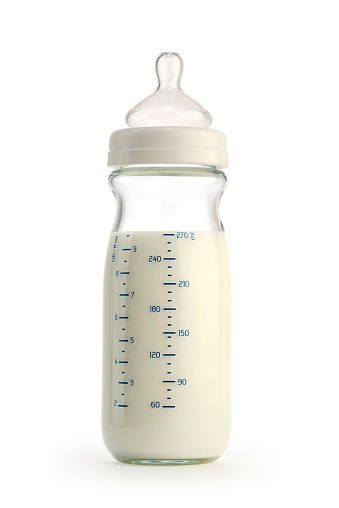 Comotomo Natural-Feel Baby Bottles
Comotomo Natural-Feel Baby BottlesBest Travel Bottle for Breastfed Babies
View on Amazon
View on BuyBuyBaby
View on Walmart
View on Target
It doesn’t get any simpler than these. So simple to assemble, you’ll be able to stick your whole hand in this ultra wide-neck bottle to clean it when you don’t have access to a dishwasher.
These are as close as you can get to the breastfeeding experience.
The nipples are big and soft. In a dramatic twist from most other bottles, even the base of the bottle is flexible, so your baby can grab and squish the bottle when she’s feeding, just like she does with your breast.
You can microwave them or stick it in boiling water or the dishwasher. If you have a baby bottle sterilizer, you can toss it in there too. It won’t warp or melt no matter which sterilization method you choose.
Both the nipple and the base of the bottle are made completely from silicone. And if you’re worried about colic, these have dual anti-colic vents.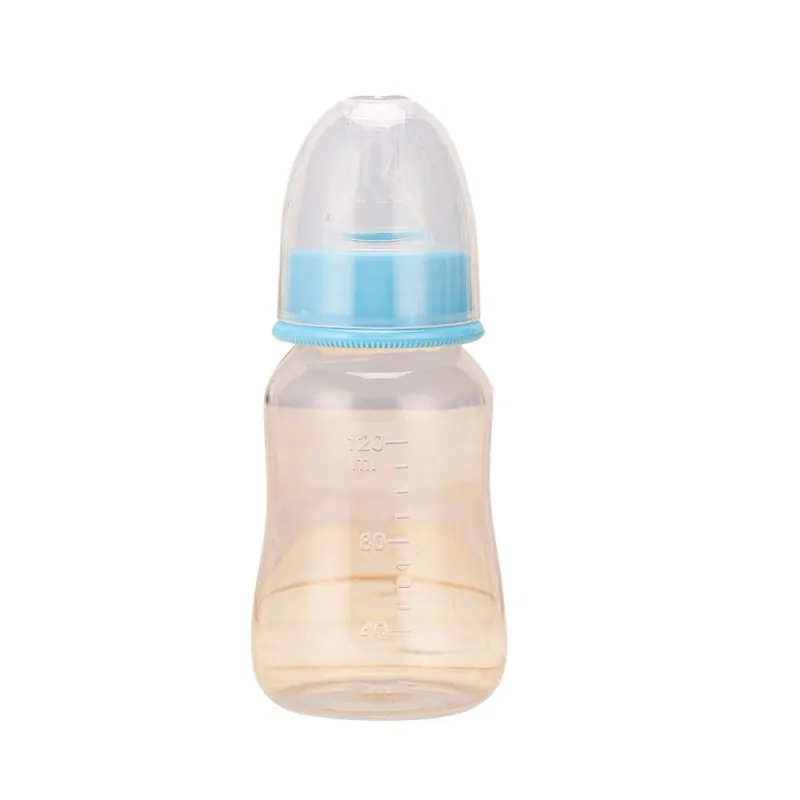
Pros
- These bottles will hold up to all the heating and squeezing you can throw their way.
- You don’t even need a bottle brush to clean these, which is great for vacations.
- Will help you avoid bottle rejection.
Cons
- These bottles are fairly expensive.
- They can give off a plastic smell when warmed up.
2. NUK Simply Natural Bottles
Best Budget Breastfeeding Bottle
View on Amazon
View on Target
View on iHerb
This three-pack of 9-ounce breastfeeding bottles combines great performance at an affordable price. Because they are so big, if you buy these you won’t have to upsize from any newborn bottles you might have considered purchasing.
It features multiple nipple holes that give a more realistic feel, like your baby is sucking on your breast. Depending on what flow the nipple is, it can have up to nine tiny holes. Plus, the wide silicone nipple stretches with your baby’s movement, which means she won’t break her latch as often.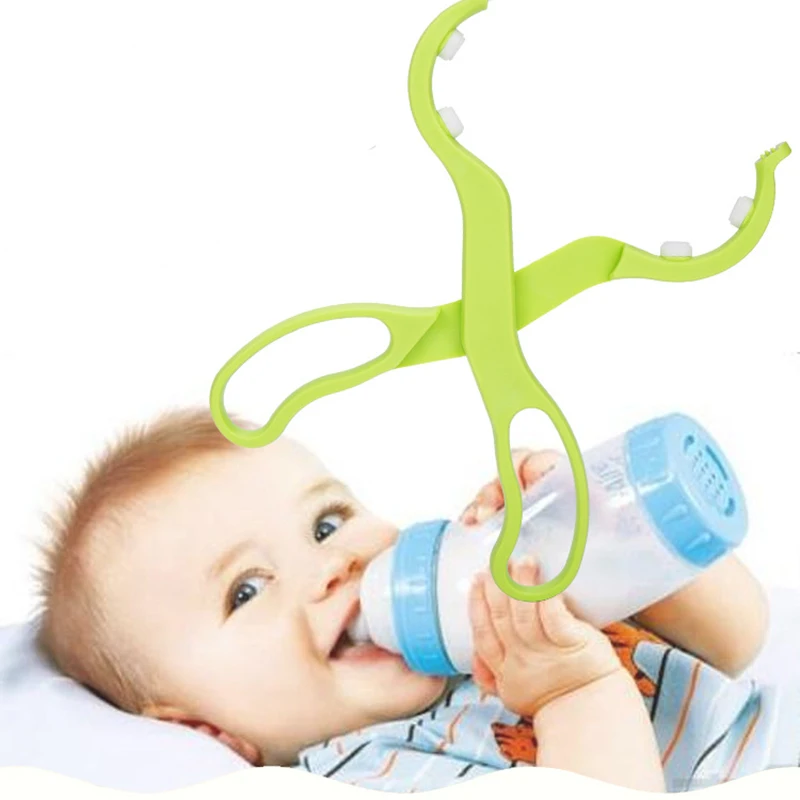
To help cut down on spit-up and gas, these use a one-piece anti-colic system. Because the colic system is built into the bottle, you won’t have to mess with trying to clean out lots of complicated pieces.
The bottles are stain-resistant, which will keep them looking newer for longer. An ergonomic design makes this bottle comfortable for both you and your baby to hold during feeding time.
Pros
- Inexpensive option.
- Built-in anti-colic system means they are easy to clean.
- The milk comes from more than one hole, like a real breast, which helps ease the transition between the bottle and breast.
- The milk won’t come out of the bottle unless she forms a proper latch.
Cons
- The cap can be tough to pull off the top.
- Because of a tiny air hole at the top of the nipple, you must position the bottle correctly when feeding.
3. Nanobebe Baby Breastfeeding Bottles
Most Innovative Breastfeeding Bottle
View on Amazon
View on Nanobebe
Nanobebe is really trying to break the mold with these “bottles. ” The shape is definitely the most breast-like on this list, and consists of a hollowed dome, a little like an upturned bowl. The nipple is angled on the one side and either you or your baby hold around the lower rim as they feed.
” The shape is definitely the most breast-like on this list, and consists of a hollowed dome, a little like an upturned bowl. The nipple is angled on the one side and either you or your baby hold around the lower rim as they feed.
If you’re concerned about retaining as much of the nutritional content of your pumped milk as possible, the makers of this bottle claim that the design optimizes heating and cooling in such a way that the vitamins and minerals are not damaged on their way from your breast to your baby.
You can pump directly into these bottles, and because they’re concave, they stack rather nicely. They’re anti-colic, too, and will inhibit bacterial growth for extra peace of mind.
Pros
- Milk cools faster and warms faster because of the way it’s stored inside.
- Helps with reflux and colic.
- Chunky, tactile shape to hold for self feeders.
Cons
- The large, somewhat awkward shape means you don’t see your baby’s face as you feed.

4. Mimijumi Get Going Bottle Kit
Best Plastic Breastfeeding Bottle
Check Price
Your baby should love the appearance of this bottle set. The large, flesh-colored nipple is surprisingly boob-like, and looks and feels like the real deal. It’s so realistic-looking your baby might do a double take when they see it.
The set comes with four bottles — two in the Very Hungry bigger size and two in the Not So Hungry smaller size. There are hardly any parts to fuss with these, which makes them extremely easy to assemble. You don’t even need to put a ring around the nipple to hold it onto the base because the nipple screws directly onto the bottle.
The slow-flow nipples and the nipple design help ward off baby fussiness caused by colic. They don’t contain BPA, and the super wide necks mean you’ll be able to clean them in seconds.
Pros
- Realistic looking and feeling nipple.
- Easy to put together and clean.
- Helps fight colic.

Cons
- They are really expensive.
- The nipples can be a little difficult to screw on correctly without having leaks.
5. Munchkin Latch Newborn Bottles
Best Anti-Colic Breastfeeding Bottle
View on Amazon
View on Walmart
This set offers a lot for a reasonable price. You’ll get three 4-ounce bottles with two slow flow nipples, one stage two medium flow nipples, and three sealing discs. The pump adapters will allow you to connect these to many breast pumps but these are sold separately.
These bottles are a good choice for preventing colic because the stretchiness of the nipple helps encourage the right latch. A proper latch can ensure your baby is taking in less air intake with every sip because the nipple will move with your baby’s mouth. The anti-colic valve at the base also reduces any gas your baby might suffer from as a result of feeding.
They are made out of plastic and silicone, so everything in this set can be cleaned in the top rack of the dishwasher.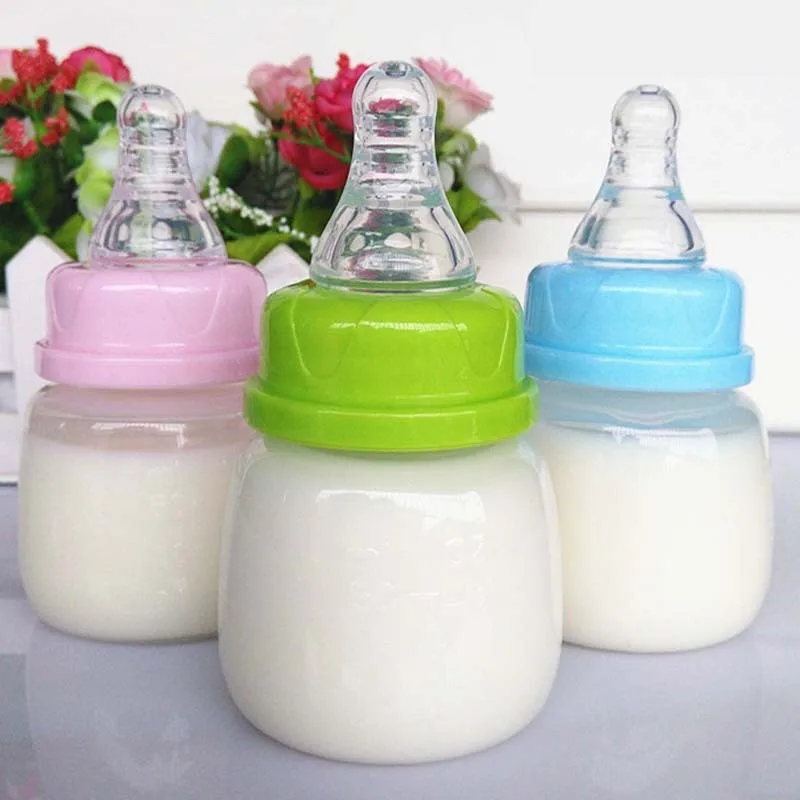 Munchin also won the 2015 American Baby’s award for Best Bottle Chosen by Moms.
Munchin also won the 2015 American Baby’s award for Best Bottle Chosen by Moms.
Pros
- Affordable with a lot of extras in the set.
- The anti-colic valve and latch nipple helps reduce colic.
Cons
- The anti-colic valve is hard to clean.
- You have to make sure everything is assembled perfectly or you’ll have a leaky bottle.
6. Philips Avent Natural Glass Baby Bottles
Best Glass Bottle for Breastfed Babies
View on Amazon
View on BuyBuyBaby
View on Walmart
Philips Avent has a lot of products aimed at making the breastfeeding experience a successful one for moms. These are just one more tool in the shed to help with that particular battle.
These bottles come in a three-pack, and they can each hold up to 4 ounces. What makes them really shine when it comes to bottle-feeding breastfed babies is the realistic nipple. The nipples are made of soft silicone and are wider than many other nipples, which will hopefully remind your baby of a breast.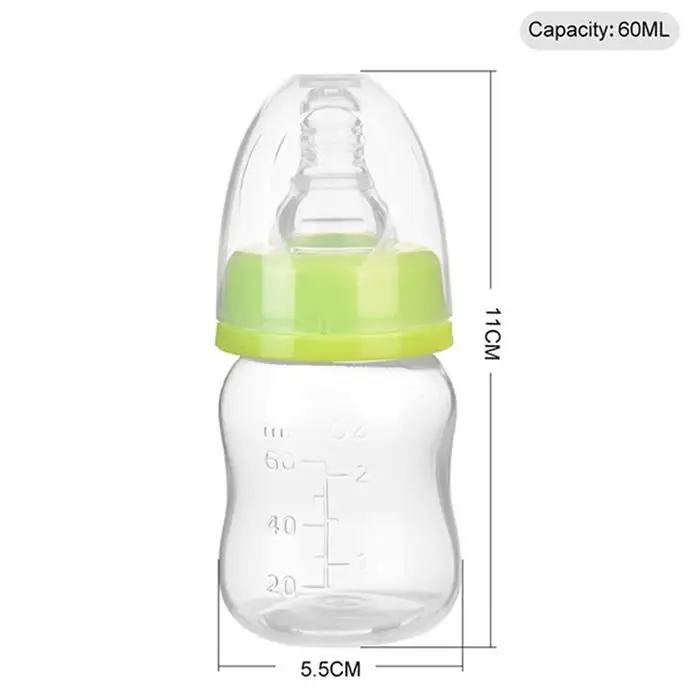
They have an incorporated anti-colic system that doesn’t require any hassle to assemble and are straightforward and easy to operate.
Philips uses strong borosilicate glass to manufacture these, which means your baby won’t be ingesting any harmful chemicals like he might with a plastic bottle.
Pros
- The wide neck makes these easy to clean or fill without spilling.
- Any nipple from the Avent brand will fit.
- Anti-colic features should make your baby more comfortable.
Cons
- These are smaller and your baby will outgrow them in a few months.
- They aren’t made to withstand sudden temperature changes, like being moved from the freezer to a baby bottle warmer.
7. Lansinoh mOmma NaturalWave Bottle
Short Nipple Choice
View on Amazon
View on Walmart
These bottles from Lansinoh consistently receive good reviews, even from parents who have struggled to coax their babies onto other brands. The shape is a little different from the usual, and sometimes that’s all it takes to get a baby to accept it. The surface of this one is matte and thick, and the nipple itself tapers off less sharply, so it doesn’t feel as long in the mouth.
The shape is a little different from the usual, and sometimes that’s all it takes to get a baby to accept it. The surface of this one is matte and thick, and the nipple itself tapers off less sharply, so it doesn’t feel as long in the mouth.
This NaturalWave design is meant to promote just the same sucking motions your baby would be practicing at your breast. These motions are necessary for proper oral development and a good latch.
Besides the nipple, the rest of the bottle is constructed of sturdy plastic and a wide, easy-to-clean neck. Many moms have also discovered that this bottle fits a range of other brand nipples, too.
Pros
- A great choice for even picky babies.
- Natural feeling, shallow, matte nipple.
- Nipple is collapse-resistant, so your baby can’t invert it and cause a mess.
Cons
- The nipple may be too fast for very young babies.
- The flexibility of the nipples means they can sometimes crack and leak.
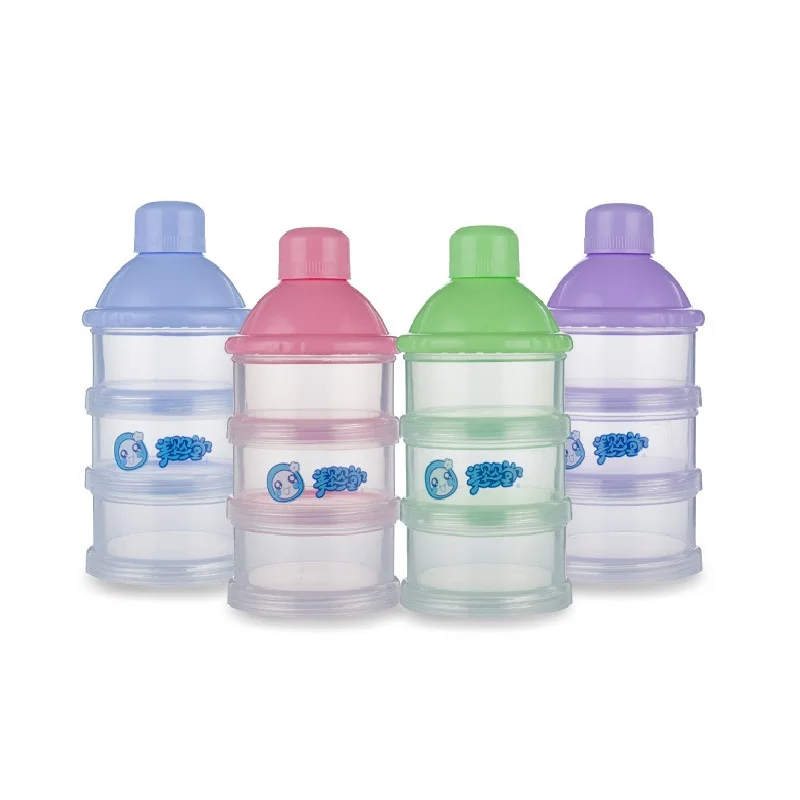
8. Tommee Tippee Closer Nature Bottles
Helps for Natural Latch
View on Amazon
View on BuyBuyBaby
Tommee Tippee bottles have a distinctive shape that really fits well into little hands. Breastfeeding experts have carefully designed the nipple to closely resemble a breast, with a wide base, flattish profile and long, natural-looking nipple. This company claims that more than 90 percent of babies will accept this nipple within three attempts.
There are different flow rates to choose from, and a sophisticated anti-colic valve mechanism that means your baby won’t be sucking in tons of air once they do form a successful latch.
The body of the bottle can be held in a few different ways, which means you’ll find a comfortable hold whatever your position. Choose from 5, 9 or 11-ounce bottle sizes to match your baby’s appetite.
Pros
- Realistic nipple that’s easy to latch onto.
- Great for babies that have refused other bottle styles.

- High quality and non-toxic materials.
Cons
- The measurements printed on the side sometimes rub off.
- The nipples may need replacement more often than other brands, especially if your baby is prone to chewing.
9. Dr. Brown's Wide Neck Bottle
Best Wide Neck Breastfeeding Bottle
Check Price
Dr. Brown’s bottles are always solid all-rounders and this wide-necked model is no different. Made of shaped BPA-free plastic that’s easy for both you and your baby to hold, the bottle offers a feeding experience that’s as close to being at mom’s breast as possible.
The venting system consists of a straw valve that reduces colic, gas, and spit-up. It can be removed to clean, or you can place everything in the dishwasher and bottle sterilizer. The bottles can be bought in packs of 2 to 8 to suit your needs, and the price is reasonable, and both a 4 ounce and 8 ounce bottle are available.
If you have a baby who is showing signs of nipple confusion or else one who gets a little colicky now and then, this bottle will help you kill two birds with one stone.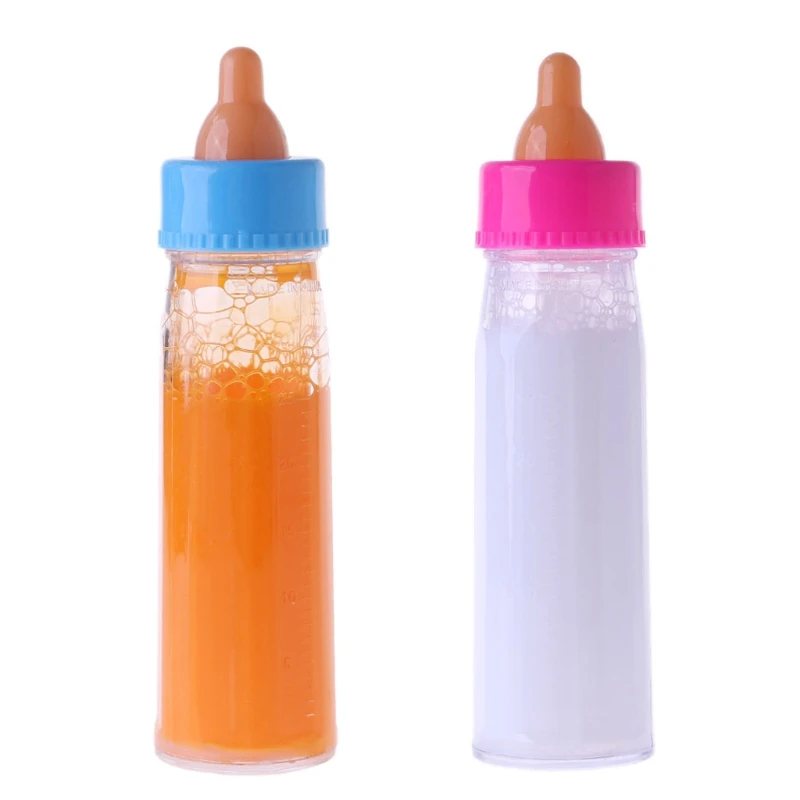
Pros
- Vent system really does remove every last bubble of air in the milk.
- BPA-free and can be put in the dishwasher.
- Quality material that holds up after repeated washes.
Cons
- Can be a little tricky to clean the inner valve.
- Some have found that the bottles leak.
- Multiple parts to put together.
10. Playtex Bottle with Disposable Liners
A Breeze to Clean Up
View on Amazon
View on BuyBuyBaby
View on Walmart
These bottles from Playtex have a very clever disposable bag system: simply add a liner to the bottle and fill with milk as usual, then discard the liner once you’re done — they’re recyclable.
The liners are not only a good idea for cutting down on washing up, but they serve an anti-colic function, too. As your baby drinks, the bag collapses with the vacuum, and no air enters. The bottles are BPA-free and the liners come pre-sterilized and ready to go so that you can get going with a feeding session as quickly as possible.
The bottle itself also has an innovative bending feature, and the top can hinge slightly so that your baby can get comfortable no matter which way they angle the bottle.
Pros
- Sterilized bags ensure extra hygiene.
- Generous flow of milk for bigger/hungrier babies.
- Easy enough to assemble, even one-handed.
Cons
- If your baby drinks less than the amount on which the bag can hold, you’ll have to take care to ensure that all the air is squeezed out the rest of the bag before you place it in the bottle.
What Your Breastfed Baby Wants in a Bottle
Buying bottles for breastfed babies requires some thinking ahead — you can’t just grab any old bottle and call it good. And you don’t want to risk turning your baby off breastfeeding forever because they learn some bad habits on a poorly designed nipple.
Put yourself in the mindset of an infant and consider the following when choosing the perfect feeding substitute so that they won’t turn their noses up the next time they’re offered a real-life breast.![]()
The Feel
You need any bottle you choose to have a similar feel to your breast to help your baby avoid any confusion. This means avoiding strangely shaped or weighted bottles that take more motor control to manage than your baby might currently have. Look for soft-bodied, round, silicone models.
The Nipple
This is the most important. The nipple actually has to make your baby work to get milk, just like they would if nursing from you. If you offer a nipple that just pours milk into their mouths no matter the latch or effort, they are going to prefer that every time. Nipples should also be shaped as closely as possible to your own, and respond to the same sucking motions. Look for “accordion” style nipples that bend and flex as your baby feeds.
Flow Speed
Closely related to this is the flow speed. Notice that your own breasts aren’t exactly milk hoses! You’ll want a flow that matches your own; not too fast or too slow.
The Shape
Babies may not have fully developed brains yet, but they still recognize people and things by appearance (1). If you breastfeed them for the first few weeks and then switch to a rounded bottle that looks breast-like, they’ll catch on and go for it. You might also think about a tilted bottle to mimic the natural breastfeeding position.
Venting
When a baby suckles, they create a vacuum. This is a good thing for your breasts, since it maintains your flow of milk. But for bottles, air bubbles can form and give your baby gas or colic. Vents allow this air to escape through either the top, the bottom, or a specially designed straw. Venting will go a long way to creating a more natural milk flow.
What Mom Wants in a Bottle
In some ways, it’s easier to go shopping for your new home than it is to pick out a baby bottle! At least with home shopping, you know what you want. You’ve lived in a house your whole life so you have a good idea about what your basic needs are.
But with bottle shopping, things are different. This is a completely foreign task if you’re a new parent, and you likely don’t have time or money to waste on trial and error.
Start by narrowing down your search to some appropriate bottles that meet the standards your breastfed baby would tell you about if they could, then take a look at the next set of criteria we think is important.
Anti-Colic FeaturesColic goes way above and beyond normal baby crying. If your baby suffers from colic, they’ll be crying around the clock (2). You’ll be so tired you’ll consider making a deal with the devil if the crying would just stop for an hour. But before you sign away your soul, look for one that has anti-colic features, like inserts or vents. Those features cut down on the air your baby swallows, which can reduce the amount of gas and fussiness they’ll have.
Price
Ideally, the cost wouldn’t be the first consideration. Unfortunately, it’s one of the top priorities for many moms who are more budget-conscious. While you should definitely factor price into the equation, avoid letting it be the deciding factor. You might buy cheap bottles and regret it later.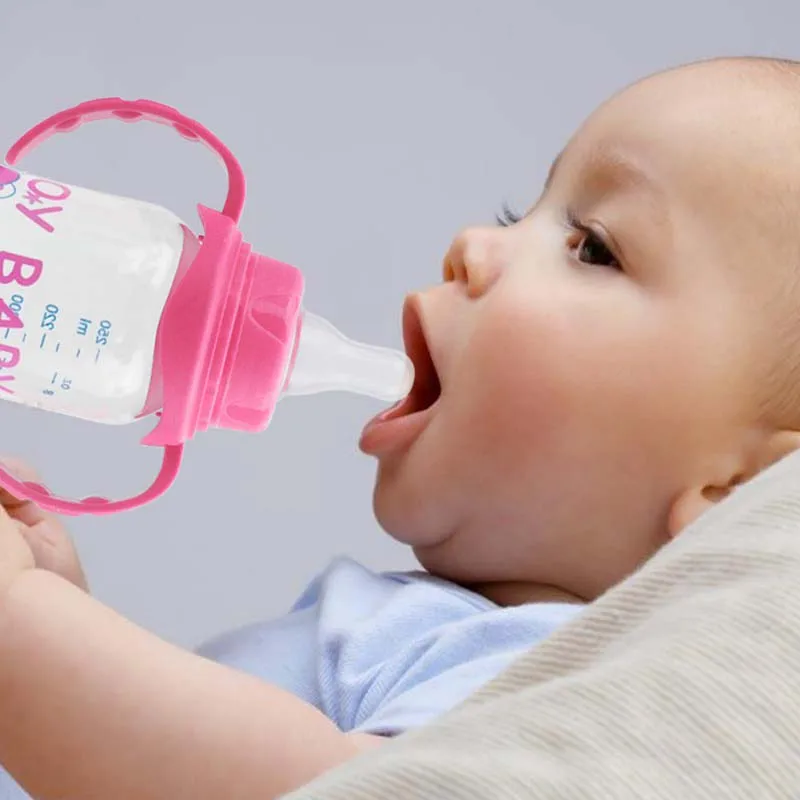 Or you could learn they don’t work for your baby, and end up buying more expensive ones anyway.
Or you could learn they don’t work for your baby, and end up buying more expensive ones anyway.
Ease of Cleaning
Some bottles for breastfed babies, especially the ones with anti-colic features, can have so many parts that you feel like you’re assembling a bomb. That’s a lot of work for someone who probably didn’t get three hours of uninterrupted sleep in the past week. If you hate your bottles because they take too much effort to take apart and clean thoroughly, keep looking until you find one that’s lower maintenance.
Material
Are you fine with plastics or silicone? Or do you prefer the appeal of old-fashioned glass baby bottles? If you want something that’s going to last, doesn’t contain harmful chemicals, and is easier to clean, go with glass. If you feel the benefits of plastic bottles outweigh their potential health risks, then you’ll find plenty of options too. Fans of silicone will be glad to know there are quality silicone bottles available too.
Tips for Buying Bottles
When you finally get a handle on what type of bottle you want, you need to go through one more checklist to make sure you’re not sabotaging your own success by forgetting something crucial.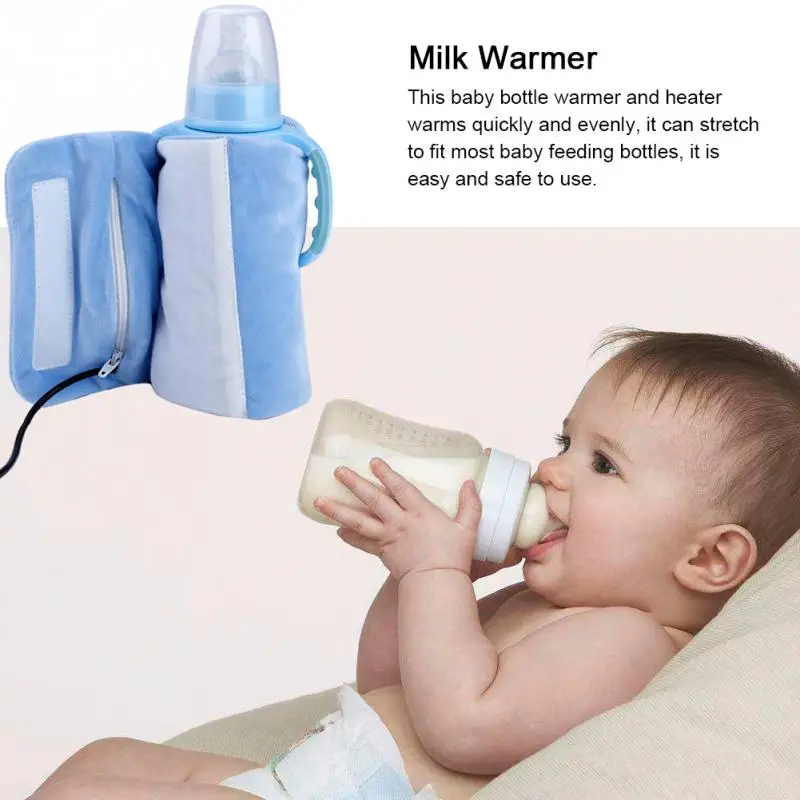
To make sure you aren’t making a big mistake, here are some tips you should follow when buying that first bottle for baby.
- Don’t buy in bulk: If you run out and buy 20 bottles only to find your baby hates them, you’re going to be sorry. Instead, find three potential candidates, buy one or two of each and see which works best for your baby before making a bigger investment.
- Consider getting the largest size: Those cute little 4-ounce bottles are perfectly sized for a newborn. But that newborn is going to grow quickly, and before long they’ll be guzzling 6 ounces of milk, not 4 (3). Buy the biggest sized bottle when you’ve found a brand you like; you can always buy a pack of slow-flow nipples to go with them until your baby is ready for faster-flow nipples.
- Consider your breast pump brand: Compatibility is a great thing. If you buy bottles that are compatible with your breast pump, you’ll be able to pump directly into the bottles, which will save you some extra dishwashing.
 What new mom doesn’t like saving her time and energy?
What new mom doesn’t like saving her time and energy? - If this is your second baby, get new bottles: I know no one likes to spend extra money, but if you have a bunch of older bottles that you used years ago with your first baby, they may no longer be appropriate, especially if they contain dangerous BPA.
When Do I Introduce Bottles to my Breastfed Baby?
There’s no telling how well your baby will deal with the differences between feeding at the breast and feeding from a bottle. Some babies easily switch between the two even from a young age, while others get hooked on one and have trouble getting used to the other. If you and your baby are nursing happily, there’s no need to add a bottle if you don’t want to.
Wait A Few Weeks
If possible, do not introduce bottles before a few weeks to a month of age, as this could cause problems for your baby later on.
But beyond that, your choice of when to introduce bottles (and which kind to use) will all depend on you:
- If you’ll have your baby with you all the time and don’t mind public nursing, you can hold off on bottle feeding.

- If there’s even a chance you may be separated at some point, it’s a good idea to get your baby used to a bottle.
- If you’re working and need to pump milk to leave with your baby at daycare, obviously introducing them to a bottle is a lot more of a priority.
- If you’re having trouble feeding, latching, or suffer cracked nipples or infections, you might want to start bottle feeding sooner just for the relief.
- If in doubt, follow your baby’s lead. Take it slow and make the introduction patiently and in stages. They’ll come around.
When in doubt, we always recommend you work with a lactation consultant to give you the best chance of success.
Tips for Bottle-feeding a Breastfed Baby
As a mom you’ll already know that nothing in the world can interfere with your baby’s own pace when it comes to their development. Slow and steady wins this race, and a bottle that’s introduced in a low-stress manner is more likely to be accepted. So relax — you’ve got this!
Try these tips to get your baby to take to a new bottle.
- Start when your baby isn’t hungry. Offer a bottle after a normal feed, at night, with just a small amount of milk.
- Choose a breast-like nipple and opt for a slow flow, particularly if your baby is on the younger side.
- Get someone else to do the first bottle feed. A baby might not take to a bottle if they can sense their mother’s presence or worse, can see your actual breasts just inches away.
- Vary the time and place you offer the bottle, and try seating your baby in different positions.
- Experiment with different temperatures of the milk.
- Many brands offer kits with different nipple sizes. Try each of them and see which one sticks.
- A neat trick is to dab a bit of your own breast milk on the nipple.
What is Paced Feeding and How Can it Help?
When you eat your meals, do you sit down and gobble it all in one steady stream without taking a breath? Or do you prefer to stop once in a while and appreciate your food, or have a chat with your dinner companion? Babies are not so different, and in fact, natural breastfeeding follows a similar pattern, with pauses and slow, measured intake.
A Natural Way To Feed
Paced feeding is a way of offering milk to your baby that most closely resembles the way they’d get it during real breastfeeding.
When your baby feeds more slowly and has to work more to get the milk, they learn to manage their own satiety. Taking pauses throughout a feed means your baby learns to accurately recognize fullness because their bellies aren’t quickly filled before they can register that they’ve had enough.
Paced feeding is thought to be less stressful for babies, and may prevent poor eating habits that could predispose them to obesity later in life (4). Plus, it may be a more obvious feeding style for those babies still fond of breastfeeding.
- Sit the baby upright and offer the bottle horizontally. This regulates milk flow.
- After 30 seconds or so, tip the bottle down or remove the teat to stop the flow.
- If your baby looks like they’re gulping, tilt them forward to let the milk flow back a little, and to encourage them to pause.

- Watch for your baby pausing naturally on their own, and wait for them to initiate feeding again.
- Avoid over-feeding. If your baby looks drowsy, bored, or sucks more slowly, they may have had enough to eat.
The right bottle and nipple will make bottle feeding more natural, but you can also go a long way to improve the experience by changing the manner you bottle feed.
One possible situation when it isn’t appropriate to use paced feeding is if you have a naturally fast letdown and your baby is already accustomed to that. Paced feeding for a baby already used to a fast flow will just feel frustrating. Also avoid too much paced feeding if your baby is having a particularly hard time with gas and colic, as this may make things worse.
Feedback: Was This Article Helpful?
Thank You For Your Feedback!
Thank You For Your Feedback!
What Did You Like?
What Went Wrong?
Feeding a baby with breast milk from a bottle
Establishing breastfeeding is one of the most significant processes for a mother in the first month after the birth of a baby. This is a sacrament in which a lot of important moments for the development of the baby are hidden: ideal food for the baby, contact between the baby and the mother, normalization of sleep. In addition, for many mothers, this is a very pleasant and healing process in the postpartum period. The release of the hormone oxytocin contributes to the contraction of the uterus and the restoration of its former shape. The production of milk by the body helps mom lose extra pounds. Long-term breastfeeding acts as a prophylactic against a number of female diseases.
This is a sacrament in which a lot of important moments for the development of the baby are hidden: ideal food for the baby, contact between the baby and the mother, normalization of sleep. In addition, for many mothers, this is a very pleasant and healing process in the postpartum period. The release of the hormone oxytocin contributes to the contraction of the uterus and the restoration of its former shape. The production of milk by the body helps mom lose extra pounds. Long-term breastfeeding acts as a prophylactic against a number of female diseases.
However, not everyone succeeds in easily coping with this process (albeit natural). In the first month, many women may experience difficulties: unprepared nipples, irregular or insufficient milk production, etc. These problems are the norm and should not become a reason for the growth of anxiety and self-blame. Most likely, in a month the process will improve. But even if this is not the case, alternative options can be used, for example: feeding with expressed milk from a bottle or supplementing with formula. In any case, it is worth remembering: you are the best mother for your child.
In any case, it is worth remembering: you are the best mother for your child.
At what age can you bottle feed your baby with expressed milk?
If there is significant difficulty in breastfeeding, you can use the bottle almost immediately. Today, a feeding bottle with a teat labeled "0+" is available in every pharmacy or baby store. There are bottles of foreign and domestic manufacturers on sale (for example, DINO & RHINO bottles are produced in Russia).
Bottle feeding may also be recommended if the baby is not suckling well at the breast, has a weak latch on the nipple, and is not gaining weight (this is sometimes the case with babies who were born a little early).
In other cases, in the first month it is recommended to establish a natural process of breastfeeding. In the future, you can use the bottle as an aid, for example, if you need to go away on business, and leave the child with dad, grandmother, nanny.
How to feed your baby with expressed milk?
To begin with, the bottle must be sterilized. How to do it correctly, you can read in our other article. Then fresh or thawed, warmed to body temperature (37 ° C) expressed breast milk is poured into a bottle, and the baby sucks it out through the nipple.
How to do it correctly, you can read in our other article. Then fresh or thawed, warmed to body temperature (37 ° C) expressed breast milk is poured into a bottle, and the baby sucks it out through the nipple.
Modern bottle nipples are designed so that when sucking, the baby must make the same movements and efforts as when sucking milk from the breast. The nipples have a flow rate close to the anatomical shape and the actual age of the baby. They are made from safe and hypoallergenic BPA-free materials, so you don't have to worry about your child's health.
How to offer the baby a bottle for the first time and teach the child to eat from it?
Usually this does not cause difficulties, many children begin to actively drink from a bottle the first time. But sometimes it takes several tries. The baby may push the pacifier away, crying is normal. Try again and again.
To offer a bottle for the first time, wait until the baby is hungry (but not too hungry) and bring the nipple to the mouth in the same way as you do with the breast nipple, at the same angle.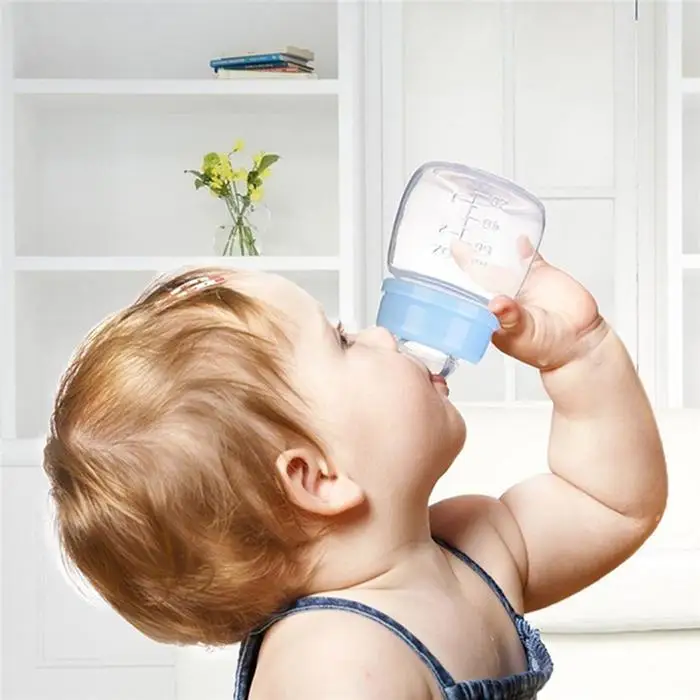 Lightly touch her lips to the child so that he opens his mouth. The optimal position of the baby when feeding is reclining.
Lightly touch her lips to the child so that he opens his mouth. The optimal position of the baby when feeding is reclining.
If up to this point you have been breastfeeding for a long time and the child has a clear connection in the head (mother - breast), ask one of the relatives to offer him a bottle, so he will not be distracted by your smell and expect the usual way of feeding.
If the baby does not want to take the nipple in any way, dip its tip in expressed milk, perhaps he will readily react to the smell.
If he wants to pause, listen to his desire.
How much expressed milk should you give your baby?
There are norms recommended by pediatricians: how many ml of milk a child of one age or another should eat. For example, at the stage of 1-6 months, the average child should eat 50-230 ml of milk per meal (you can find a detailed table by month in the relevant reminders). But there is also an individual norm. If your child eats less or more than the average amount, but is healthy and developing well, there is no reason to worry.
How to make bottle feeding as safe as possible?
- Choose a nipple with an age-appropriate flow and ensure your baby is in the correct feeding position to prevent choking.
- Sterilize the nipple, bottle, and pump before every feeding in the first few months of your baby's life.
- Be sure to wash your hands before feeding and pumping.
- Store expressed milk correctly: no more than 4 hours at room temperature. If you need to store longer, use the refrigerator or freezer.
Can I alternate between breastfeeding and bottle feeding?
Yes, for most children this does not cause discomfort. Although there are babies who eventually choose only one way: breast or bottle. For the rest, this alternation is not a problem, and they willingly drink milk, no matter how you offer it.
At a certain age, the baby's ability to eat from a bottle becomes very convenient for mothers. First, they may go away, leaving the baby and the expressed milk to other adults.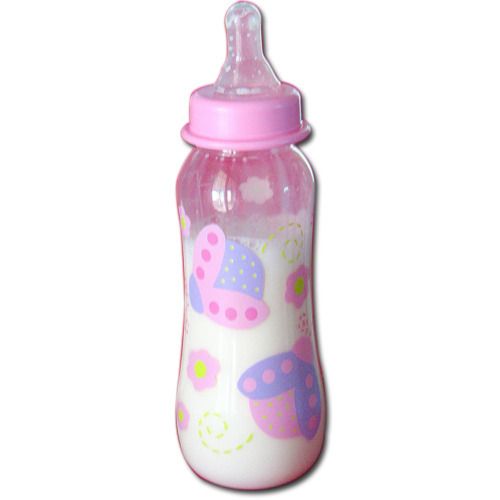 Secondly, growing up, the child himself learns to hold the bottle. Then a feeding bottle with handles is very handy, which is convenient for the baby to use on their own.
Secondly, growing up, the child himself learns to hold the bottle. Then a feeding bottle with handles is very handy, which is convenient for the baby to use on their own.
Which feeding bottle to choose?
The very first thing mothers do when a baby is born is put it to the breast, not only to feel the warmth of their long-awaited baby, but also because breastfeeding is an important moment for the child's immunity.
But, sometimes we have to resort to the help of a feeding bottle from the first days of the baby's birth, and if we start using baby bottles, we want to be sure that we are buying 100% safe ones.
One of these bottles, approved by many parents and chosen by us in the MISHKA Store - Natural Feel Baby Bottle from the American company Сomotomo. This is the world's first fully 100% silicone baby bottle, completely safe material free from BPA free, PVC and phthalates. Silicone reduces the feeling of anxiety and anxiety in the baby. He is, for a moment, as soft as his mother's breasts.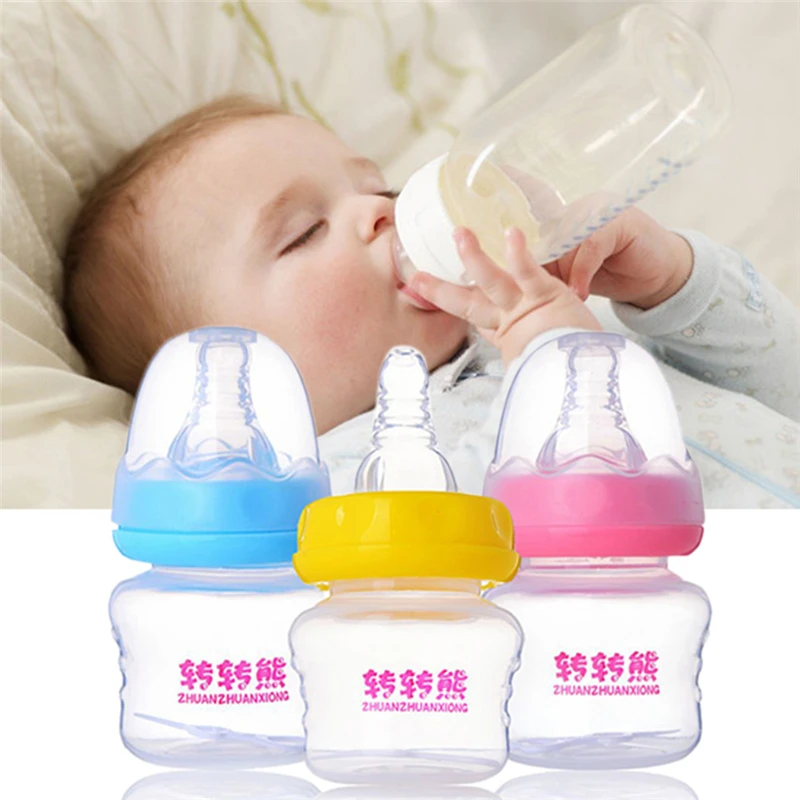 And it really works.
And it really works.
Nature itself gave us the opportunity to be closer to our child. But, modern mothers sometimes have to look for alternatives to breastfeeding their baby. If you want to continue breastfeeding your baby, but don't know how to combine both breast and bottle, then the Calma baby bottle with teat from the Swiss company Medela is right for you.
The Calma Medela bottle helps your baby maintain a consistent feeding pattern and makes it easier for moms to get their baby back to breastfeeding. Why is she? Not only does the Calma bottle imitate breastfeeding to the maximum, it is also complemented by a whole feeding system: breast pumps, breast milk freeze bags and other Medela accessories that will help mom to combine breastfeeding and bottle feeding, for example, on days when you need to be away on business, and maybe even return to breastfeeding after 1-2 weeks. How to do it right, we will tell in a special review.
Well, if it's a question of finding a baby bottle that will grow with your baby, then I would recommend an anti-colic bottle from the Swedish company Twistshake.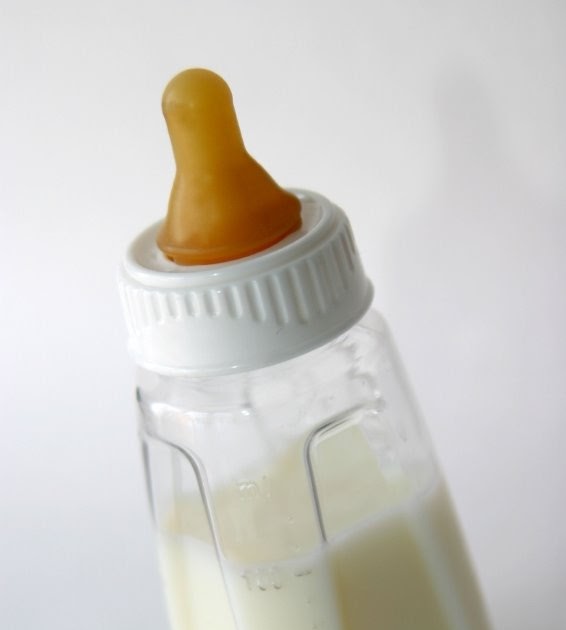
"What's so special about this bottle?" you ask.
Well, firstly, a special shaker that allows you to achieve a homogeneous mixture. No lumps!
Second, my favorite is the dry mix container. No need to prepare the mixture in advance and it is indispensable on the road.
The Twistshake anti-colic bottle is all connected, space-saving, convenient, easy to clean and the colors are fire. When the baby grows up, you can switch to drinking cups of this brand or simply put a drinking spout on the bottle. And, of course, the material is premium high-quality polypropylene with food-grade silicone. In general, I recommend!
As for the presence of a special valve that prevents excess air from entering the baby bottle. Less baby colic! While we don't really know what causes this problem, most brands of baby bottles are trying to find ways to minimize colic in babies.
Today, most modern bottles provide a natural and constant flow of milk and almost all have anti-colic holes to allow good air circulation, which is commonly believed to reduce unwanted colic, spitting up and gas in babies.

